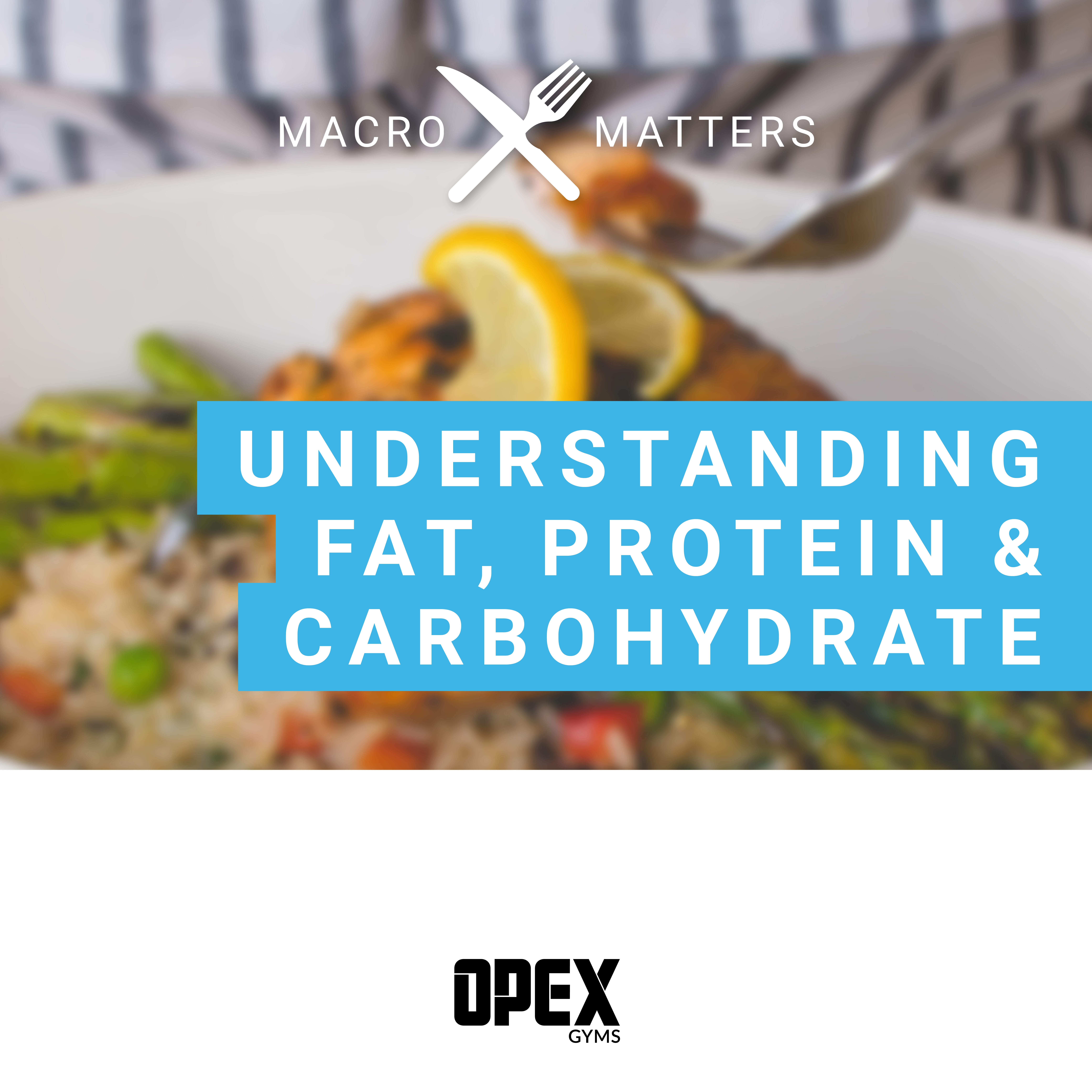What Are Macronutrients

Macronutrients supply the body with calories. Different foods contain varied ratios of the three macronutrients–fat, protein and carbohydrate.
Understanding why each macro is important and what kinds of foods contain large amounts of them will help you put together meals that support your body composition, performance and health goals.
Fat
Dietary fat does not equal body fat, and fat macros are an important part of a healthy diet. Eating fat is essential for hormone production, cell creation and absorption of vitamins. Fat quality and variety is very important, so we distinguish between lower and higher order fats.
Lower order fats include shortenings, pastries, fried foods, hydrogenated soybean, cottonseed and canola oil, and margarine. These should be minimized, if not excluded, from your diet. Higher order fats include seeds, nuts, fish, grass-fed meats, avocado, olive oil, lard, butter, coconut, palm oil, flaxseed oil, and olives.
Every gram of fat contains 9 calories.
Protein
Protein breaks down into amino acids, which form the building blocks for our body to build and repair cells, muscles and organs. Protein is especially important for gym-goers to recover and build lean mass. Consuming protein regulates hormones that are responsible for controlling fat storage, making it key for fat loss. Of all the macronutrients, it has the highest thermic effect, meaning the digestive process to break down and absorb protein uses more calories than fat or carbohydrates.
Good sources of protein include meats, chicken, pork, shellfish, fish, eggs and dairy. Opt for grass-fed and finished, wild-caught, hormone-free and organic options, especially when choosing fattier cuts as toxins are stored in fat. If optimal quality is not available then opt for leaner cuts.
Every gram of protein contains 4 calories.
Carbohydrate
Carbohydrates provide an easy form of energy for our bodies and brains. Carbs can help stabilize blood glucose levels and can be stored in the liver and muscles as glycogen to be used for activity. For athletes engaged in intense training, carbs are important for performance. Carb intake must be matched to activity-level, function, goals and body-composition.
We can distinguish between simple and complex carbs. Simple carbs, such as candy, sugars and soda, are fast sources of energy and spike blood sugar. Complex carbs, such as non-starchy vegetables, are slower to digest and keep blood sugar more stable.
Typically, leaner folks are most sensitive to carbs and can utilize them effectively. They may benefit from starchy vegetables, grains and fruits. On the other hand, carrying excess body fat can make someone more resistant to carbs, and this insulin resistance can eventually lead to fat storage, metabolic disease and diabetes. If fat loss is a goal, sticking to non-starchy vegetables as carb sources may be beneficial.
Every gram of carbohydrate contains 4 calories.
How much of each macronutrient should you eat?
The answer, as always, is it depends.
Counting macronutrients by weighing and measuring food has been popularized by a number of nutrition gurus, but for 99% of people looking for good health, this diet rigidity is often not necessary to get great results. Quantity is important, but there are other effective ways to eat a balanced diet without a food scale.
When putting together a balanced plate, a general starting point when considering macronutrients could be:
- 1 palm of protein for women and 2 palms for men
- 1 fist of non-starchy vegetables (complex carbs) for women and 2 fists for men
- 1 cupped hand of starchy vegetables, grains or fruits (carbs) and 2 cupped hands for men
- 1 thumb sized portion of fats for women and 2 thumbs for men
This general recommendation does not take into account body composition, activity levels, goals, gut health and lifestyle quality. It is also important to note that some people do better on a high fat/low carb diet, whereas others thrive with low fat/high carb.
An OPEX Coach can help you tailor a macro plan that is right for you. They will also lay a foundation of 10 steps to follow before you start counting macros (link 10 steps blog), to make sure you are actually capable of digesting and absorbing the healthy foods you’re eating!